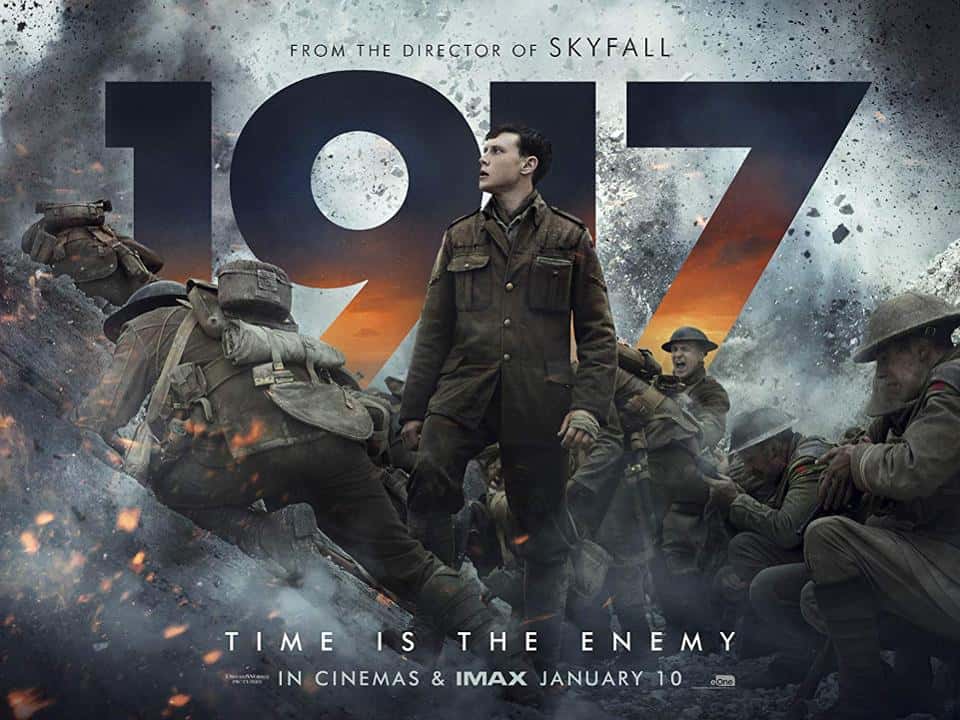A screenwriter is a story teller so you need to understand and master the Story Elements to ensure your Screenplays work.
These Story Elements are universal, cross cultural and found in all stories whether it’s a Rom Com, Thriller or Horror film.
However a finished Screenplay doesn’t automatically contain the Story Elements. You have to create and develop them early in the writing process and that’s why in Step 2 of my 1-Step-A-Day Screenplay technique I detail the Story Elements required for an engaging and compelling Screenplay.
For a detailed description of the Story Elements you can watch my video.
In summary the key Story Elements are:
Character
Incident Incident
Goal
Dramatic Question
Conflict/Antagonist
Climax
Theme
1917 is one of the most interesting and engaging films about WW1 I’ve seen and a great example of a simple story told well.
If the audience has an option between a complex story told badly or a simple story told well, they’ll always gravitate to the later.
As I was watching the film I was really impressed with the concise and simple way Sam Mendes and Krysty Wilson-Cairns created and expressed the Story Elements required to make a script great.
The screenplay clearly introduces and dramatises the Story Elements that make for an engaging cinematic experience so I thought I would break them down.
Characters
Lance Corporal Blake and Schofield
1917 is a dual protagonist story where more than one character is striving to achieve the same goal. With dual protagonist stories it’s important the characters are distinct and different from each other with contrasting points of view, approaches and beliefs. This creates conflict, adds depth and gives the audience different perspectives on the same situation.
The opening image introduces the two protagonists Blake and Schofield, young soldiers, sleeping behind the trenches of the western front. They are already friends but are quite different people who have been moulded from their experiences before and during the war.
Blake is younger and hasn’t seen a lot of combat, which makes him optimistic and enthusiastic. He thinks the war will end soon and is keen to do whatever it takes to defeat the Germans. He’s a very determined and brave soldier who is also compassionate but comes across as naive about the nature of the war.
Schofield is older and more jaded, he has seen front line combat and understands the horrors and futile nature of trench warfare. Despite being brave he doesn’t see himself as a hero and is pragmatic, ultimately he just wants to get out of the war alive.
Inciting Incident
Blake is woken then told to pick a partner and report to the command bunker. He picks Schofield. Still groggy they weave their way through the bunkers to the command post and are given an urgent mission. The Germans have retreated from their frontline and it appears they have surrendered, so the British have sent 1,600 troops forward to annihilate the Germans in a dawn charge. However it’s a trap, the Germans have in fact taken up a better defensive position and the 1,600 men will be charging straight into an ambush.
As it’s 1917 there is no communication method beyond delivering orders personally, so the protagonists have 8 hours to go beyond no mans land, navigate to the new British frontline and find the commanding officer to stop the charge. It’s a classic life and death race against time scenario and to add to the urgency and increase the stakes, Blake’s older brother is one of the 1,600 soldiers.
Goal
To deliver the order ‘stop the charge’ to the commanding officer.
Dramatic Question
Will Blake and Schofield deliver the message to ‘stop the charge’ in time to save 1,600 men?
Conflict/Antagonist
Interestingly the main antagonist of the story, the Germans, are barely present in the story. Though there is a constant threat German soldiers will ambush our heroes, there are only a handful of combat scenes.
However there is no shortage of conflict. Blake and Schofield clash with commanding officers, other soldiers and their different world views result in arguments.
Blake is singleminded and determined to reach his brother at any cost and willingly take risks to achieve the mission, putting both men in danger. Schofield is more cautious and believes their mission is impossible, at one point he expresses his resentment towards Blake for picking him to go.
At the midpoint of the story Schofield must cope emotionally with the tragic death of Blake, which becomes a turning point in his motivation, he now understands the importance of the mission.
Physical conflict and barriers are ever present from the environment. Throughout the story Blake and Schofield are in constant battle with the horrendous and harrowing conditions of the trenches. They encounter rats, booby traps, explosives, decaying bodies, barbed wire, lack of food or water, all halting their progress.
Climax
After nearly drowning, being shot at and losing his friend, Schofield arrives at the frontline just as the first wave of the charge is happening. Desperate he takes an enormous risk and jumps from the trenches into the firing line and bombardments to sprint the final distance to the commanding officers bunker. Once there he has to overcome the commanders guards and insists the charge must stop immediately. The commanding officer dismisses him but after an impassioned plea from Schofield, the charge is called off saving most of the men, including Blake’s brother.
Theme
Schofield’s arc is from a jaded and pragmatic solider with the goal of surviving the war to a man who risked everything to save 1,600 men.
The theme can be stated as
‘We achieve humanity through brave sacrifice for others’.





